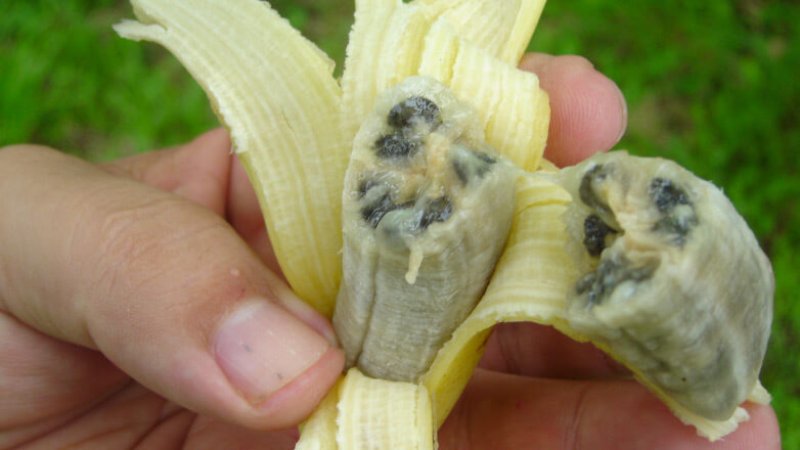We are in the age of the Cavendish, a banana cultivar that accounts for 99 percent of imports to the Western world. But the Cavendish is in trouble. …
At the heart of the conflict is the sturdy little fungus Fusarium oxysporum f. sp. cubense; it infects and kills banana plants and, since the banana industry relies so heavily on one species, it is spreading steadily across banana-rich Southeast Asia and into Australia and the Middle East.
…
It hasn’t helped that plantation owners in Asia often don’t use responsible planting techniques that could slow down or perhaps stop the disease’s spread. That includes quarantining affected areas and carefully cleaning farm equipment that could transmit the disease elsewhere.
…
To cope, researchers have for years been attempting to create genetically modified versions of the Cavendish that are immune to TR4. There has been some success with breeding somoclones, a type of genetic variation caused by tissue culture cultivation
…
The prospect of creating a transgenic banana, one with beneficial genes from another species, or one that’s been modified with a technique like CRISPR is even more tantalizing. Just [last] year, James Dale at the Queensland University of Technology in Australia reported he’d created strains of TR4-resistant Cavendish using genes borrowed from other species. Two separate varieties, one with genes from a banana resistant to TR-4, and another with genes from a nematode, remained disease-free after three years.
…
If planting transgenic banana proves to be economical, and consumers can stomach the extra genes, the Cavendish may well remain king in Western supermarkets for the foreseeable future.
Read full, original post: The Banana As We Know It Is Dying…Again































